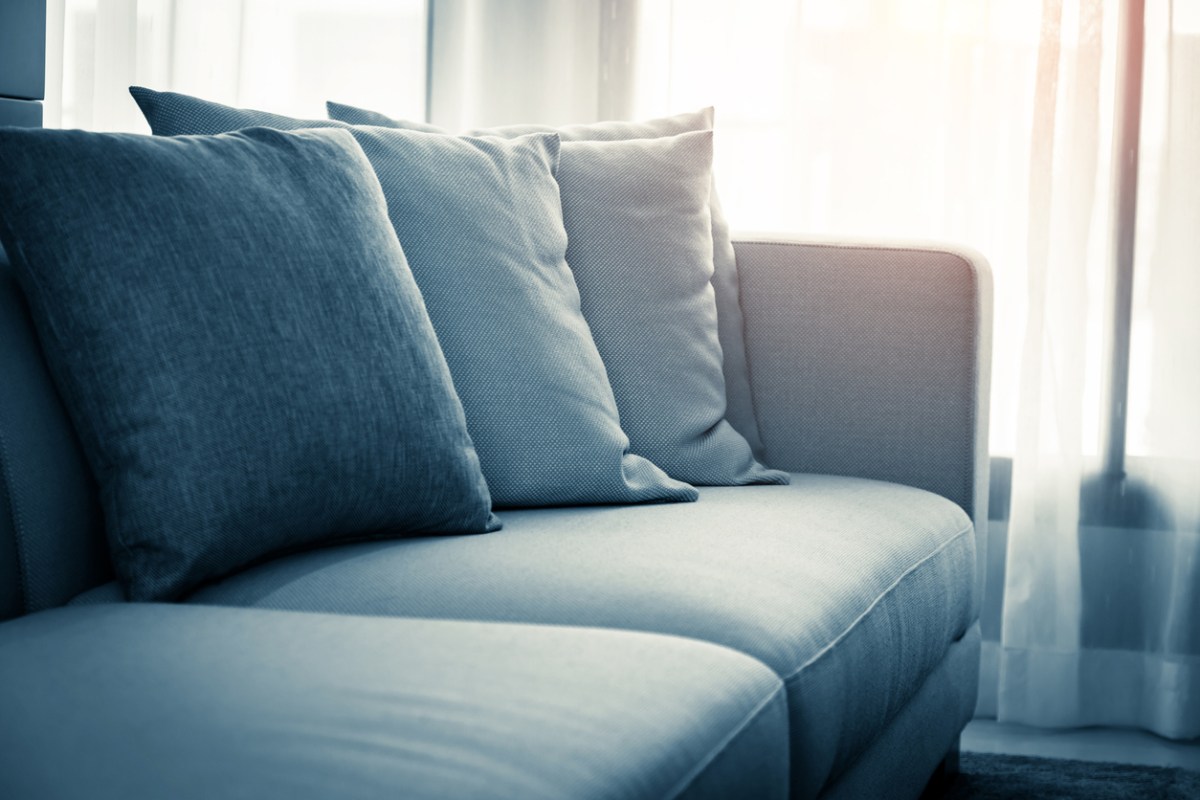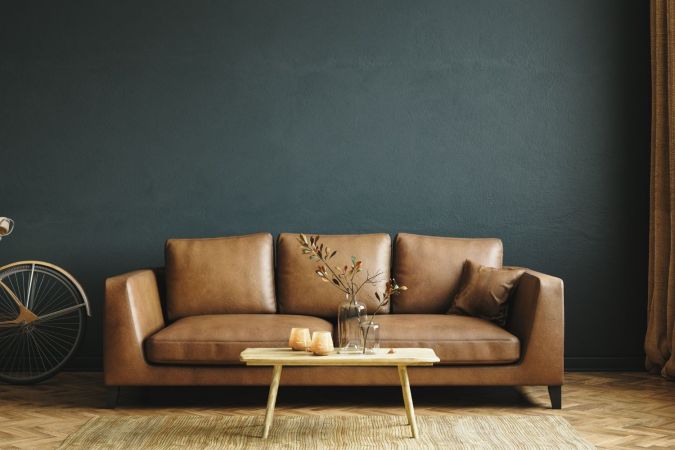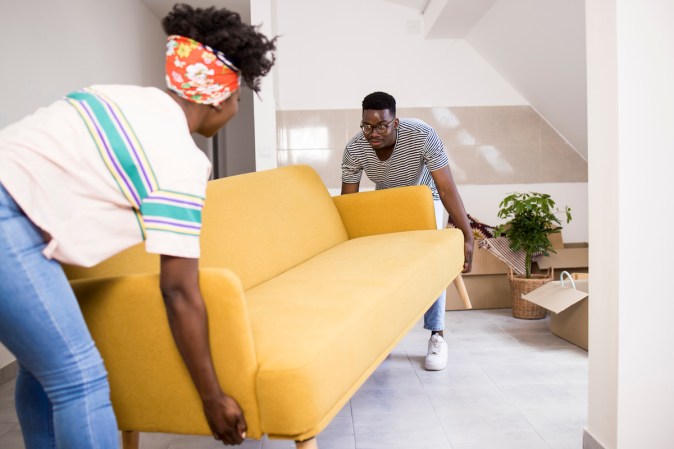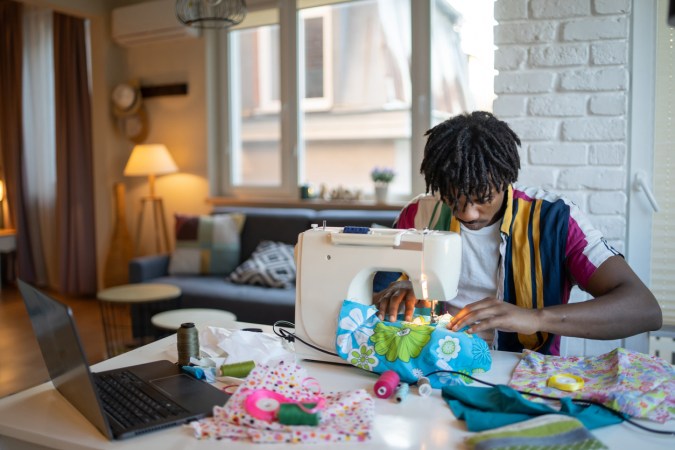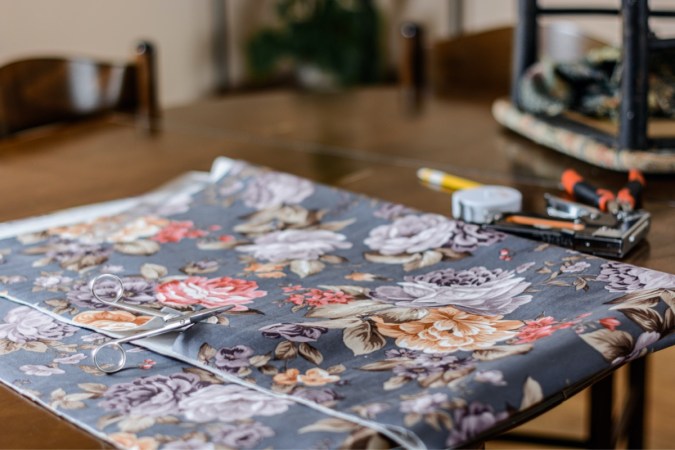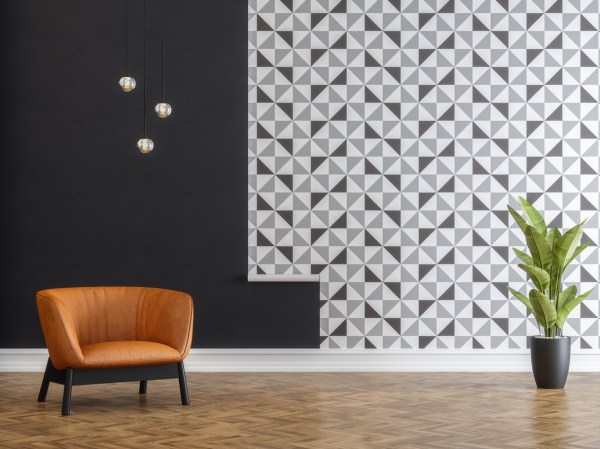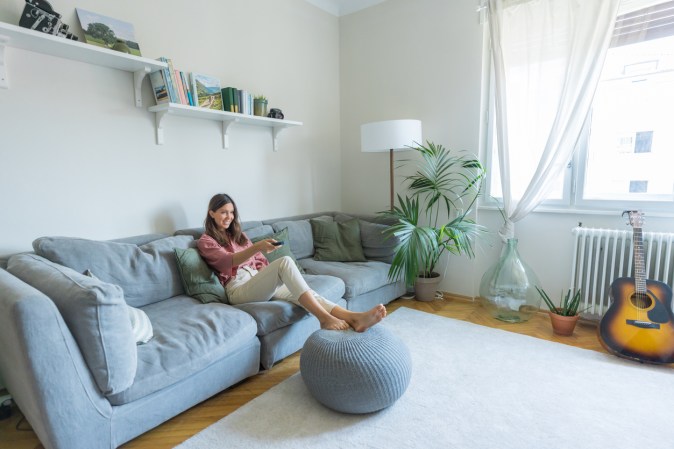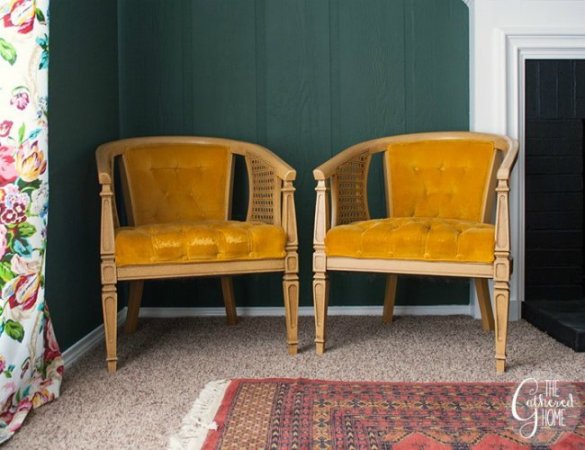We may earn revenue from the products available on this page and participate in affiliate programs. Learn More ›
Cleaning upholstery with a steam cleaner or other cleaning products can only go so far. Sometimes the fabric on your old couch has simply seen better days. Learning how to restore a sofa allows you to breathe new life into a worn or outdated couch.
With just a few materials and a little bit of your time, you can give it a face-lift with a new cover that will better match your home decor preferences. Read on to learn how to reupholster a couch.
Tools & Materials
Bobvila.com may earn a commission from purchases made through these links.
- Tape measure
- Camera
- Notebook
- Pen
- Dust mask
- Gloves
- Staple remover
- Needle nose pliers
- Screwdriver
- Fabric scissors
- Staple gun
- Sewing machine
Project Overview
Working Time: 5 to 10 hours
Total Time: 1 to 3 days
Skill Level: Expert
Estimated Cost: $150 to $1,200
BEFORE YOU BEGIN
As you’re getting ready for your DIY upholstery job, keep in mind that every couch is different. You may find that you need to make a few modifications to the directions below based on how your couch is designed and how the current upholstery is attached. The upholstery cost will also vary based on some of these design elements along with the fabric you choose for the project.
RELATED: The Best Way to Clean a Couch
STEP 1: Closely examine the couch and take measurements.
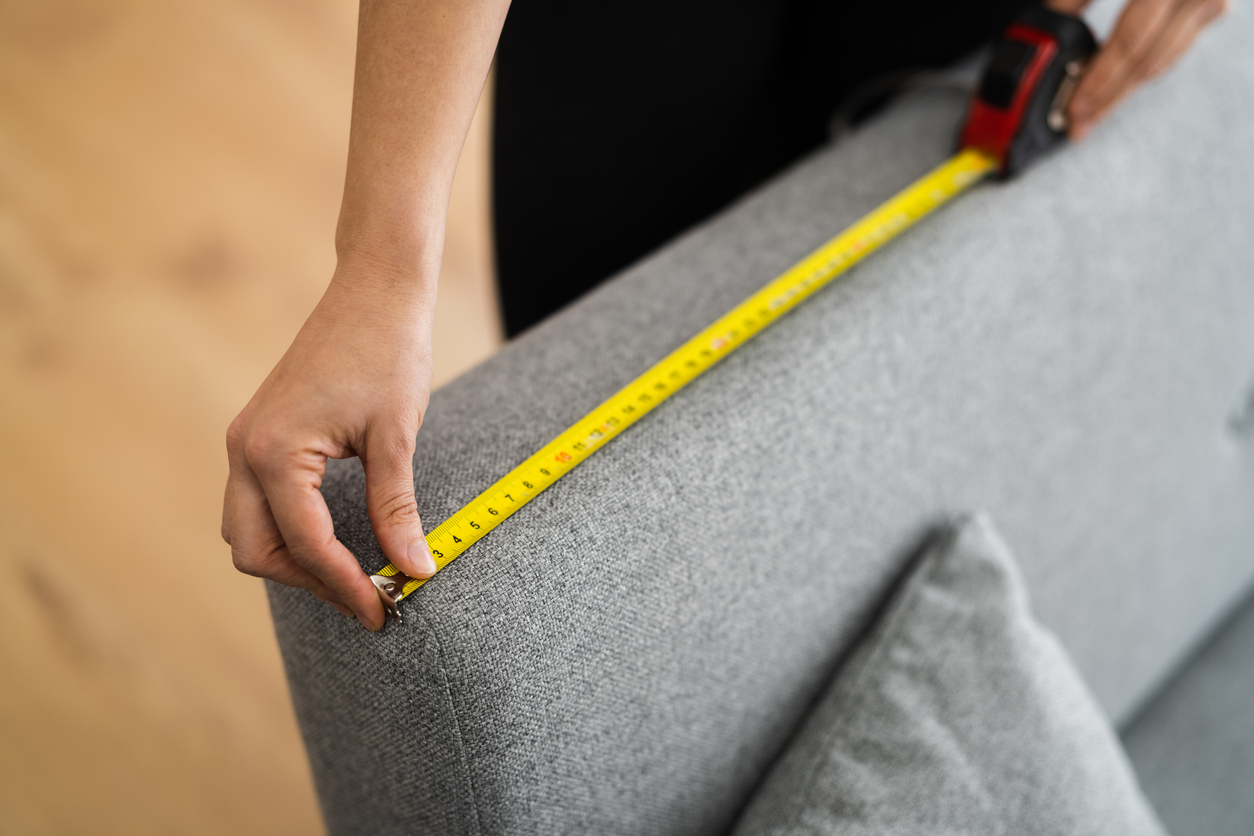
Before you start working, take a few minutes to examine the couch. Pay attention to the overall design, look for the location of the staples, and note whether there is any cording, buttons, or other design embellishments. Snap a few photographs that you can refer back to as you are attaching the new upholstery.
Then, take some measurements of the couch and the current upholstery fabric to get a good estimate for how much new fabric you’ll need to purchase.
STEP 2: Remove the dust cover from the underside of the couch.
Place the couch on a drop cloth. If the couch is very old, you may need to wear a dust mask and gloves, as a lot of debris and dust particles could be released into the air while taking apart the fabric covering.
Now that you’re ready to begin the real work of taking off the existing upholstery and reupholstering the sofa, it’s time to remove the dust cover. The dust cover, which is located on the underside of the couch, is generally the final piece of fabric applied during the production process. Taking it off first, therefore, is the best place to start.
To remove the dust cover, turn the couch upside down. Remove the legs, if applicable, and then pull out the staples securing the dust cover using a staple remover. If the dust cover is in good condition, you can reuse it once you’re finished, so work carefully so it doesn’t snag as you remove it.
STEP 3: Remove the old upholstery.
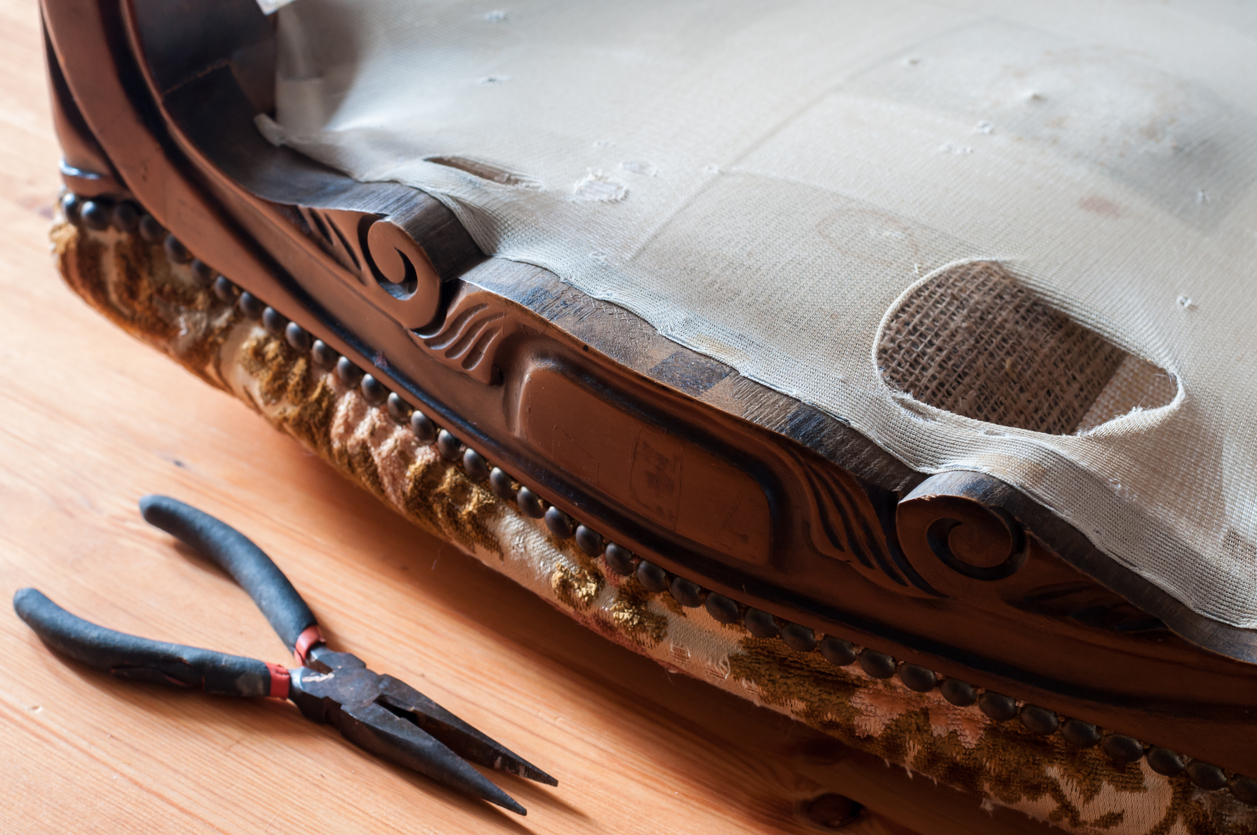
It is technically possible to skip removing the old couch upholstery and jump ahead to recovering the existing material, but it isn’t usually the best choice. The finished product won’t turn out as nice. It may also feel overly bulky with two layers of fabric.
To remove the existing fabric, you’ll need a staple remover. There will be numerous staples to remove, so prepare for this step to take some time. As you work, try to remove the pieces of fabric in the opposite order that they were attached to the sofa, which will typically start with the upholstery panel. There will likely be several layers of fabric to remove, and you may also need a pair of needle nose pliers or a screwdriver to help you loosen and remove them.
Be sure to take pictures and notes as you go about the order in which you removed the fabric pieces. This will make it easier when you’re ready to attach the new upholstery fabric. Saving the fabric pieces as a template to trace when cutting the new fabric can also be helpful.
STEP 4: Add additional stuffing to the cushions if needed.
Before you jump right into attaching the new couch upholstery fabric, assess the condition of your couch cushions. If any of them have been feeling a bit flat, now is the ideal time to add some new stuffing. If they do need some TLC, add some polyfill or stuffing to them, taking care not to overfill them.
STEP 5: Measure and cut the new upholstery fabric.
There are several upholstery fabric options to consider when you’re shopping in store or at an online fabric store. Cotton, leather, polyester, and microfiber can all work well when upholstering furniture. However, fabrics such as chenille, silk, and tweed aren’t as well-suited for upholstery projects. Also, make sure to check the recommendations for cleaning the fabric before purchasing, as not every type of fabric can be easily cleaned.
Lay the fabric out flat and cut it to match the sections of the sofa that need to be covered. If you saved the fabric that was removed from the couch, laying it out over the new fabric can help provide a template. Using a sharp pair of fabric scissors will help prevent the fabric from snagging.
STEP 6: Attach the upholstery fabric to the couch.
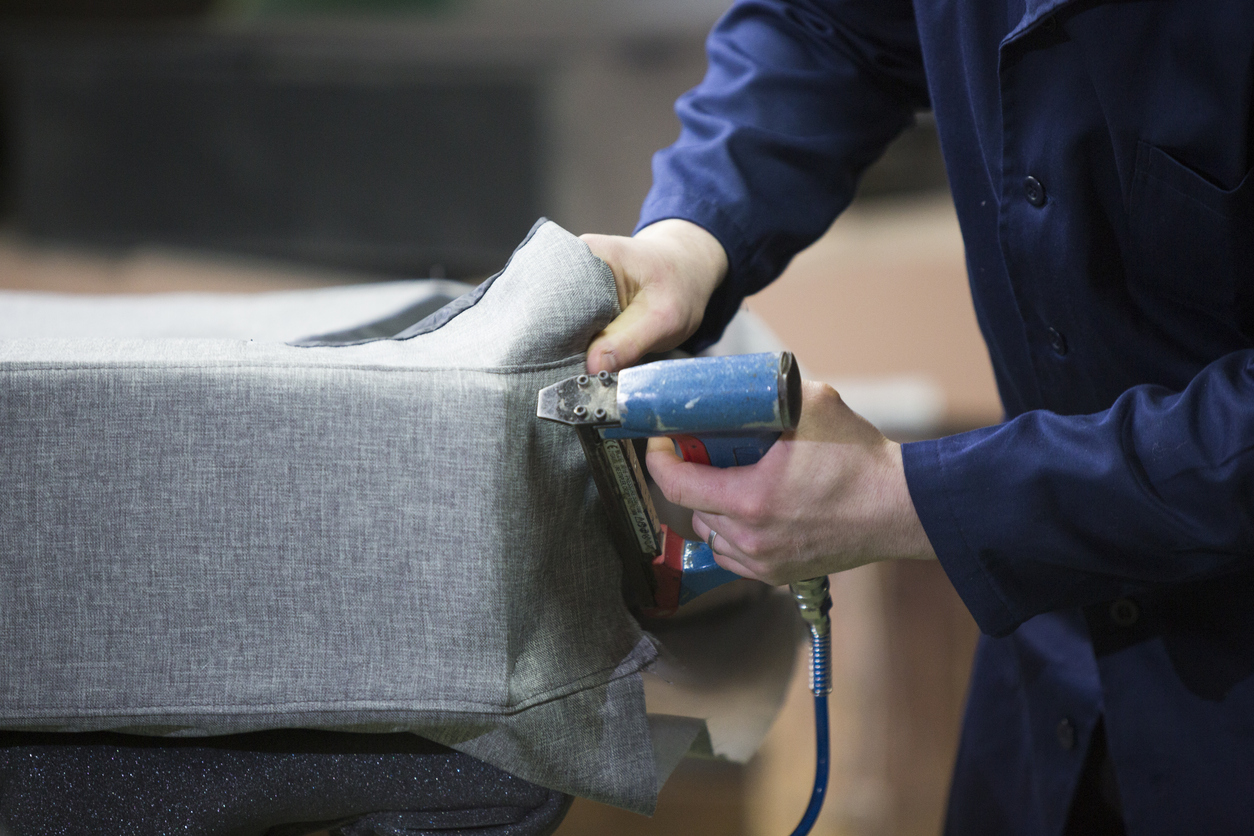
Now you’re ready to attach the new fabric to your couch. Follow the photos and notes you took to apply it in the reverse order that you removed the old fabric. This means that the first piece of new fabric you attach should go in the same spot from which the last piece of the old fabric was removed.
When attaching the upholstery fabric, make sure it is pulled tight before stapling it down. This step is essential to keep the fabric from bunching or wrinkling. Use a staple gun with heavy-duty staples to ensure a secure connection that will hold the fabric taut.
STEP 7: Put the dust cover back on the underside of the couch.
If the dust cover you removed earlier is in good shape, you can reattach it to the underside of the couch using your staple gun to keep all the fabric corners hidden. If the original cover was damaged, simply cut a new one using a fabric that coordinates with the upholstery fabric you chose for the sofa. Look for a fabric that is on the thicker side, so it won’t be easily damaged.
STEP 8: If needed, apply corded trim to cover the staples.
Sometimes staples are still visible after recovering sofas. For this reason, your couch may have had some decorative trim along some of the seams. If this was the case, apply some new trim to finish off the project.
Choose a cord that matches the color and design of the fabric you choose, and use fabric glue to attach it to the sofa. If you can’t find a matching cord, make a cover for a plain cord with the upholstery fabric you used.
STEP 9: Sew new covers for any removable cushions.
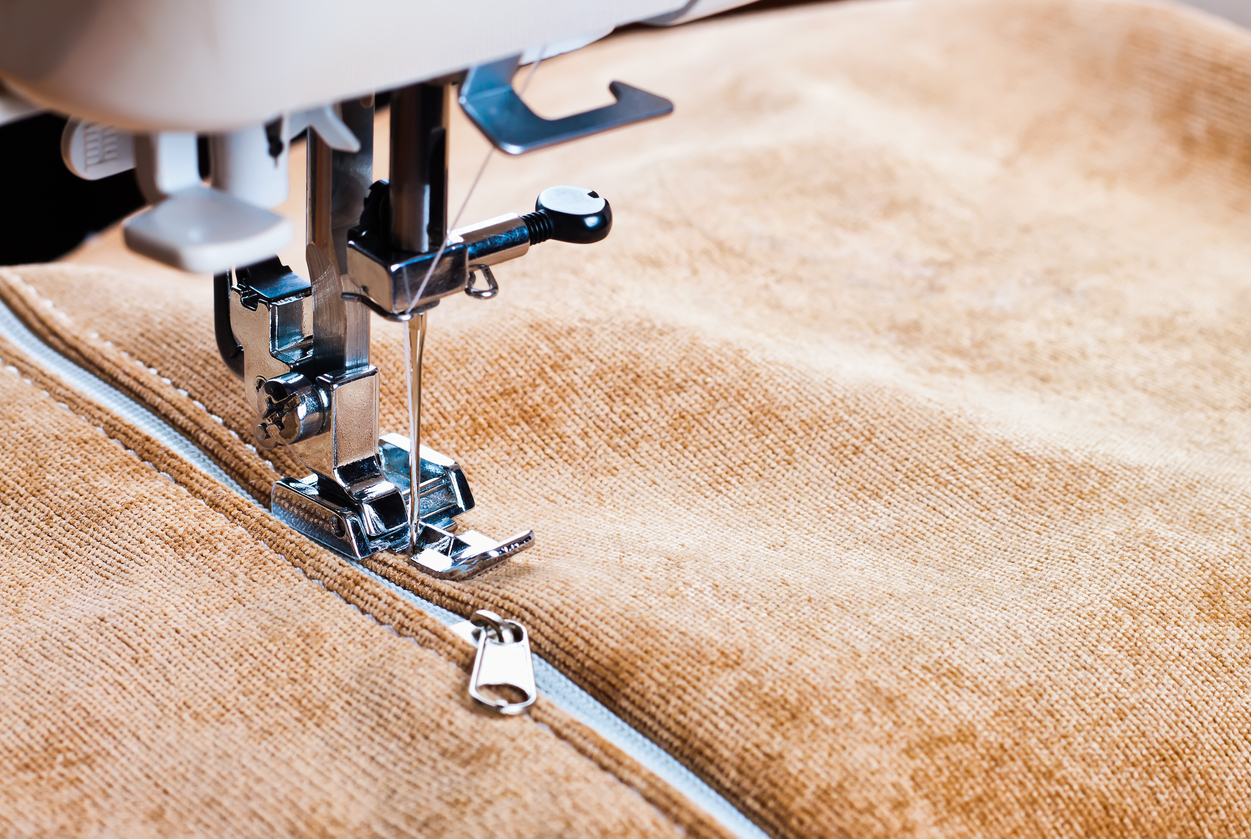
You can sew a cover to reupholster couch cushions that are removable. Remove the existing covers from the cushions and make a pattern for your new material. Add zippers to the cushions so you can remove them to wash in the machine or clean them using a DIY upholstery cleaner. To sew the cushion covers and add zippers, it’s easier to use a sewing machine.
STEP 10: Take care of any final refinements.
Depending on the design of your couch and your preferences, there may still be a few final steps to complete. Some of these may include using a sewing machine to make throw pillow covers to coordinate with the upholstery fabric and staining or painting the legs of the couch before reattaching them.
Final Thoughts
While you can pay a professional to reupholster a couch for you, there is something very fulfilling and personal about doing it yourself. The steps above will help walk you through the process of giving an old or outdated sofa a face-lift. Then, once you’ve completed your sofa upholstery project, you can start tackling other reupholstering projects around your house, such as recovering your dining room chairs.

